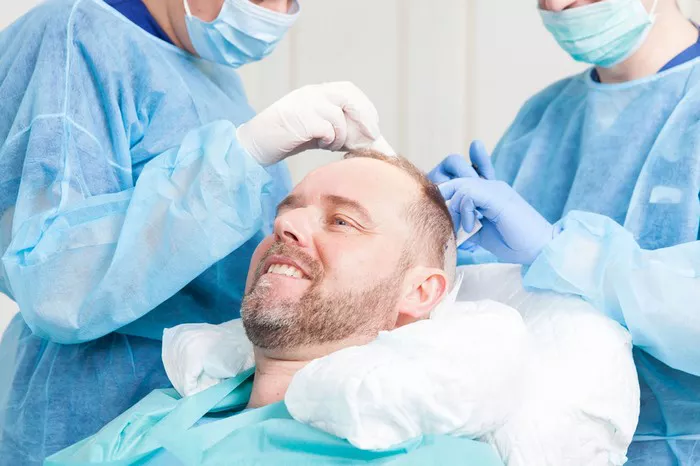Hair loss is a common concern affecting millions worldwide, leading many to seek effective solutions for restoring their hair and confidence. Among the various options available, hair replacement methods have gained significant attention for their promise to deliver natural-looking results. But the question remains: does hair replacement work effectively, and what should one expect from these treatments?
This article provides a comprehensive overview of hair replacement, focusing on key factors such as the effectiveness of hair transplant procedures, what influences success, and realistic expectations. We will also touch upon important considerations like hair transplant surgery and its recovery process, to give you a well-rounded understanding.
Understanding Hair Replacement
Hair replacement encompasses various techniques aimed at restoring hair density and improving appearance. These range from non-surgical options like wigs and hairpieces to surgical approaches such as hair transplantation. While temporary solutions offer immediate improvement, they do not address the underlying issue of hair loss and require ongoing maintenance.
In contrast, surgical hair replacement offers a more permanent solution by redistributing hair follicles from areas of healthy growth to thinning or bald regions. This method has revolutionized hair restoration and is widely regarded as the gold standard in hair replacement therapy.
What Is Hair Transplant Surgery?
Hair transplant surgery involves harvesting hair follicles from a donor site—typically the back or sides of the scalp, where hair is genetically resistant to balding—and implanting them into balding or thinning areas. The transplanted follicles then grow naturally, producing hair that blends with the existing hair.
Modern techniques include Follicular Unit Transplantation (FUT) and Follicular Unit Extraction (FUE). FUT removes a strip of scalp to extract follicular units, while FUE individually extracts follicles with minimal scarring. Both methods have proven effective when performed by skilled surgeons.
Does Hair Replacement Actually Work?
The core question of whether hair replacement works can be answered affirmatively—but with important caveats. Success depends on multiple factors, including the method used, the patient’s condition, and expectations.
Effectiveness of Hair Transplant Surgery
When performed properly, hair transplant surgery provides permanent hair growth in areas of baldness. Transplanted follicles maintain their genetic characteristics, meaning they generally do not fall out like the original hair in balding zones. This results in a natural appearance and lasting coverage.
However, the outcome depends heavily on the surgeon’s skill, the quality of donor hair, and the patient’s adherence to post-surgery care. Results typically start becoming visible around 3 to 4 months after the procedure, with full growth evident by 12 to 18 months. Viewing hair transplant before and after photos can provide insight into potential results.
Limitations and Considerations
While hair transplants are effective, they do not prevent future hair loss. Patients with progressive hair loss may require additional procedures or maintenance treatments to maintain a full look. Moreover, not everyone is an ideal candidate—for example, individuals with insufficient donor hair or certain scalp conditions may experience less favorable results.
Cost is another important factor. Hair transplant cost can vary widely depending on the clinic, technique, and number of grafts needed. It is essential to research and consult with specialists to understand what investment is required and to avoid substandard providers who may compromise results.
The Hair Transplant Recovery Process
Recovery is a crucial phase that influences the final outcome of hair replacement surgery. Immediately after the procedure, the scalp may show redness, swelling, and scabbing. These symptoms usually subside within a week.
Patients must follow strict care instructions, including gentle washing, avoiding strenuous activity, and protecting the scalp from sun exposure. New hair shedding often occurs temporarily in the weeks following surgery, which can be alarming but is a normal part of the growth cycle.
Complete recovery and visible hair growth can take up to a year, during which patience and proper care are essential. Many find that the benefits of restored hair and confidence far outweigh the temporary discomfort and wait.
Alternative Hair Replacement Methods
Besides surgical options, non-surgical hair replacement techniques are also popular. These include hairpieces, wigs, and scalp micropigmentation. While these provide immediate aesthetic improvement, they require ongoing maintenance and do not stimulate natural hair growth.
Some topical treatments and medications, like minoxidil and finasteride, can slow hair loss and promote limited regrowth but may not be sufficient for advanced baldness. Combining these with surgical hair replacement often yields the best long-term results.
Choosing the Right Hair Replacement Option
Deciding whether hair replacement will work for you involves assessing your hair loss pattern, overall health, budget, and personal goals. Consulting with a board-certified hair restoration specialist can provide a personalized plan tailored to your needs.
Key questions to consider include:
- What is the extent and cause of my hair loss?
- Do I have sufficient donor hair for transplantation?
- What are the costs and recovery times involved?
- What realistic results can I expect?
Informed decision-making is essential to avoid disappointment and to maximize the benefits of hair replacement therapies.
Conclusion
In summary, hair replacement does work, especially when surgical techniques like hair transplant surgery are employed by experienced professionals. It offers a permanent and natural-looking solution for many individuals struggling with hair loss.
Success depends on choosing the right procedure, having realistic expectations, and committing to proper care during the recovery phase. While alternative methods exist, surgical hair replacement remains the most effective approach for lasting results.
With advancements in technology and techniques, those seeking hair replacement can confidently explore options to regain hair and self-esteem, making it an empowering and effective choice for many.
Related Topics:
- Hair Transplants Boom as Stigma Fades, London Leads Industry Growth
- Top Surgeon Dr. Harikiran Chekuri Transforms Lives with Advanced Hair Transplant Surgery
- Can Menopause Cause Hair Loss? Experts Explain Causes and Treatments


